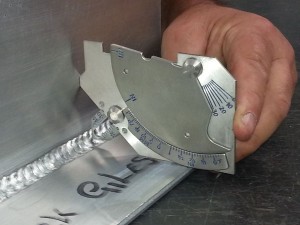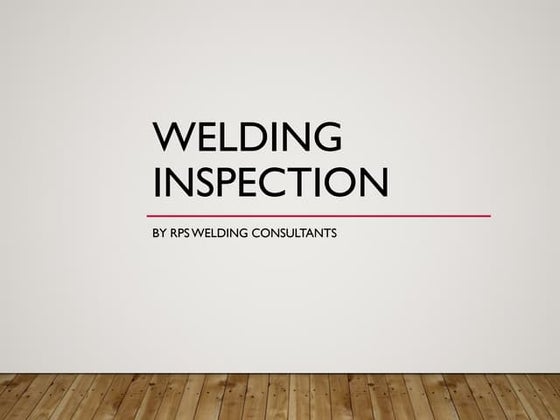How Welding Inspection Gilbert Arizona Can Enhance Your Building And Construction and Manufacturing Processes
How Welding Inspection Gilbert Arizona Can Enhance Your Building And Construction and Manufacturing Processes
Blog Article
Welding Evaluation Demystified: Key Processes, Devices, and the Essential Duty They Play in Preserving High-Quality Welds
Welding inspection acts as an essential backbone in the assurance of structural stability and quality in bonded joints, influencing numerous markets from building and construction to production. This procedure is not simply a rule; it encompasses important methods such as aesthetic exams and advanced non-destructive testing methods made to uncover issues that might endanger safety. With a range of specialized tools at their disposal, examiners play a necessary duty in keeping high requirements. The intricacies of these methods and their implications for top quality guarantee continue to be frequently overlooked. What are the crucial processes and devices that ensure these standards are promoted?
Significance of Welding Inspection
Guaranteeing the stability of bonded joints is paramount in numerous sectors, making the significance of welding assessment undeniable. The quality of welds directly impacts the security, performance, and longevity of frameworks and elements. In fields such as building and construction, automobile, aerospace, and production, any failure in bonded joints can result in catastrophic consequences, consisting of structural failures, equipment malfunction, and loss of life.
Welding examination offers as an essential quality assurance measure, guaranteeing that welds meet defined requirements and regulative needs. It identifies defects such as splits, porosity, and insufficient fusion that might endanger the stamina of the weld. By spotting these problems early, welding examination can protect against costly rework, delays, and potential safety and security hazards.
Moreover, welding evaluation cultivates compliance with industry requirements and accreditations, improving the reliability of companies and their products. It also supports continuous enhancement by providing important comments to welding employees, allowing them to improve their strategies and processes.
Eventually, the value of welding evaluation can not be overstated; it is essential for preserving high-quality welds, making sure safety, and securing financial investments across different markets.

Secret Examination Processes
Reliable welding examination counts on a collection of key processes designed to examine the top quality and integrity of welds. These procedures include both non-destructive and visual screening (NDT) methods, making certain that any problems are recognized prior to they jeopardize architectural honesty.
The very first step in the evaluation procedure is an extensive visual assessment, which enables examiners to assess welds for surface area problems such as cracks, damages, and incomplete combination. Adhering to visual checks, numerous NDT methods might be utilized, including ultrasonic screening, magnetic fragment screening, and radiographic screening. Each method offers unique advantages; for instance, ultrasonic testing can identify internal defects, while radiographic testing gives a long-term record of the weld's internal framework.
In addition, it is crucial to validate conformity with pertinent codes and requirements, ensuring that the weld meets sector requirements. This consists of examining weld measurements and positioning, as inappropriate dimensions can result in failings under lots.
Crucial Tools for Assessment
Frequently making use of the right tools is important for achieving precise welding assessments. A thorough collection of assessment tools helps make sure that welds fulfill stringent top quality requirements and specifications.
One of the primary tools is the visual assessment scale, which enables assessors to examine surface area problems, such as tidiness and surface finish, directly. Additionally, calipers and micrometers are essential for gauging weld dimensions and ensuring they adapt needed tolerances.
For more detailed assessments, ultrasonic screening (UT) equipment is vital. This approach makes use of high-frequency audio waves to assess and identify inner defects material thickness. Likewise, magnetic fragment testing (MT) and color penetrant screening (PT) are vital for recognizing surface and near-surface flaws, supplying immediate visual indicators of potential concerns.
Welders must also be equipped with solidity testers, which assess the mechanical homes of the weld metal and base materials, ensuring they satisfy given needs. Lastly, documenting findings with digital examination tools enhances traceability and quality assurance. By utilizing these necessary devices, inspectors can keep high-quality welds, eventually adding to the security and reliability of bonded frameworks.
Usual Problems and Their Detection
Welds, akin to the foundation of structural honesty in building and construction and production, can exhibit numerous problems that compromise their efficiency and security. Typical issues consist of porosity, splits, undercut, absence of blend, and slag incorporations (Welding Inspection Gilbert Arizona). Each of these imperfections can show up due to inappropriate welding strategies, poor product choice, or insufficient preparation

Discovery of these issues can be accomplished with different non-destructive testing approaches, including aesthetic assessment, ultrasonic screening, and radiographic screening. Each technique plays a crucial function in recognizing these faults, ensuring that the integrity of the weld is maintained and minimizing the threat of failure in important applications.

Best Practices for Top Quality Guarantee
Guaranteeing the finest of welds is critical for architectural integrity and safety, especially in sectors where the consequences of failure can be see post severe. To attain this, a number of finest methods for top quality guarantee have to be executed throughout the welding process.
First, a robust welding treatment specification (WPS) must be established, outlining the needed criteria for each and every welding procedure. This ensures consistency and adherence to market standards. Second, extensive training and qualification of welders are vital; competent personnel are much better equipped to produce premium look at this web-site welds and acknowledge prospective problems.
Routine examinations need to be incorporated into the welding process, making use of both non-destructive and visual testing (NDT) approaches to detect defects early on. Regular calibration of examination tools is important to maintain precision. Furthermore, documenting all welding tasks, consisting of inspections and restorative actions, creates a traceable document that can be invaluable for quality assurance.
Final Thought
Finally, welding assessment functions as a crucial device for making sure the integrity and dependability of bonded joints throughout industries - Welding Inspection Gilbert Arizona. Via the execution of crucial assessment procedures and the usage of necessary devices, organizations can effectively recognize and resolve potential defects. Adherence to best techniques in top quality guarantee not just enhances security but additionally makes certain compliance with market requirements, eventually adding to the durability and performance of elements and structures
Welding examination offers as an important foundation in the guarantee of architectural stability and quality in bonded joints, impacting various sectors from building to manufacturing.Making certain the stability of welded joints is extremely important in numerous markets, making the importance of welding assessment indisputable.Welding article source assessment serves as a critical high quality control measure, making sure that welds meet defined criteria and governing demands. By employing these essential tools, assessors can preserve premium welds, ultimately adding to the security and dependability of welded frameworks.
In conclusion, welding examination offers as an essential system for making certain the integrity and integrity of bonded joints throughout sectors.
Report this page